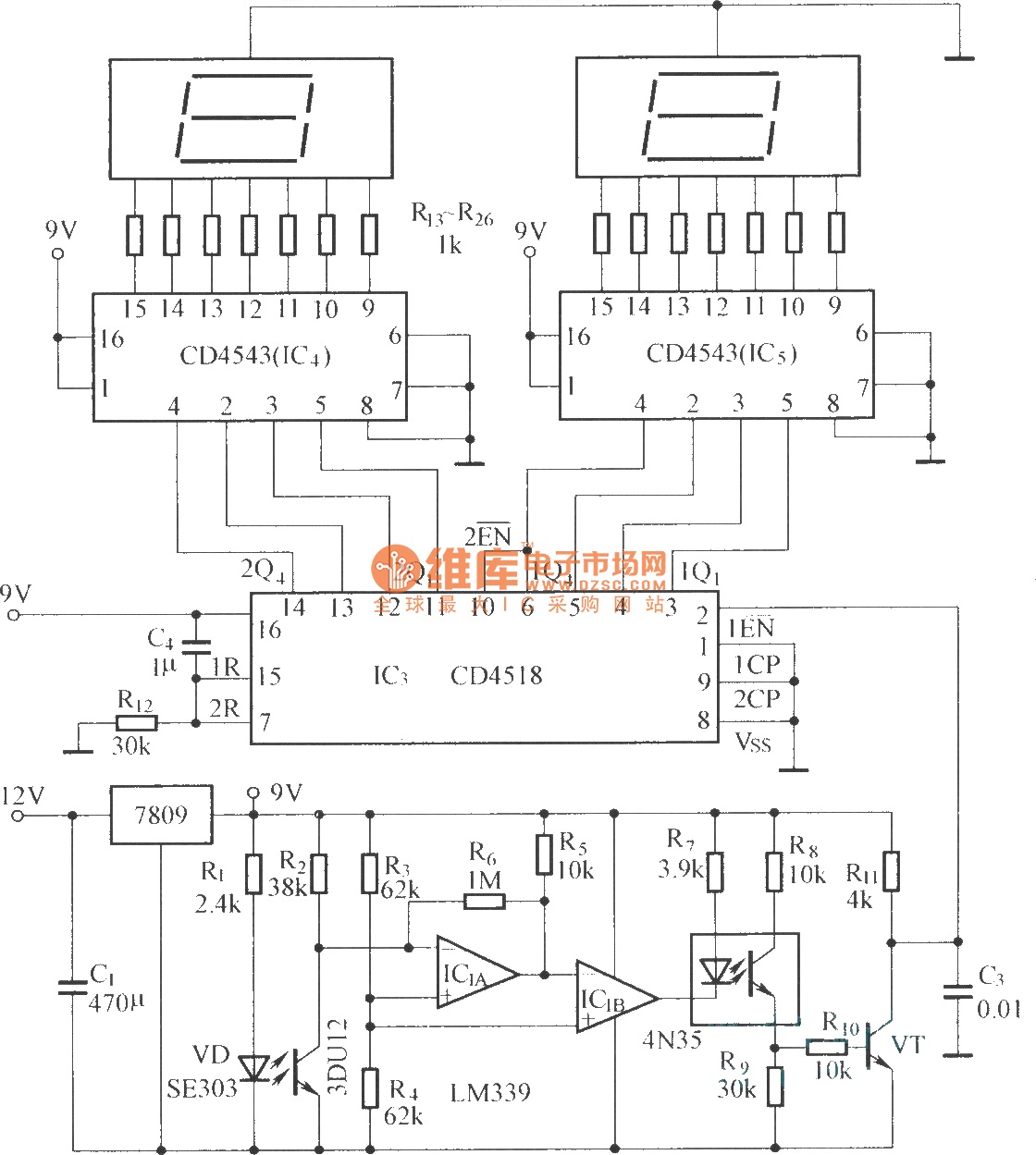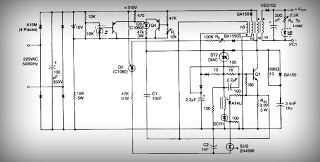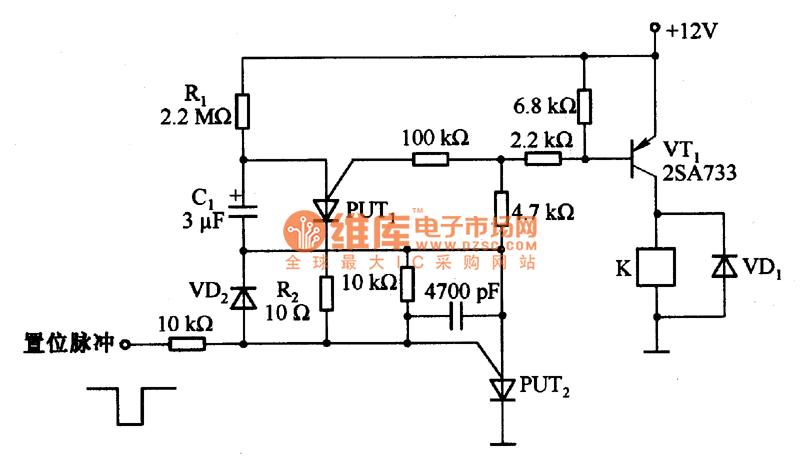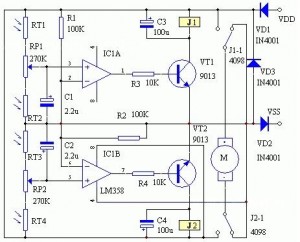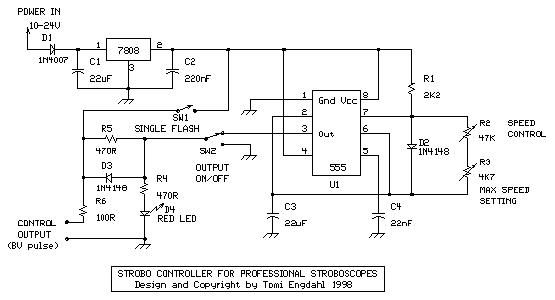
Thermostat controller integrated circuit schematic

The circuit utilizes a built-in temperature sensor to control the triac TC620 for temperature regulation. The adjustment circuit consists of resistors Rp1 and Rn, which can be modified to set both the lower and upper temperature limits. LED1 illuminates when the ambient temperature exceeds the lower limit, while LED2 activates when the temperature surpasses the upper limit. The selection of the triac BCR's rated current should be based on the load power requirements.
The described circuit employs a temperature sensor that continuously monitors the ambient temperature and provides feedback to the triac TC620, which acts as a switch to control power to the load based on the temperature readings. The adjustment circuit, incorporating resistors Rp1 and Rn, allows for fine-tuning of the temperature thresholds. By changing the values of these resistors, the user can set specific lower and upper limits for temperature control, ensuring that the system operates within desired parameters.
LED1 and LED2 serve as visual indicators of the temperature state. When the ambient temperature rises above the designated lower limit, LED1 lights up, signaling that the system is actively managing temperature. Conversely, LED2 provides a warning when the temperature exceeds the upper limit, indicating that the environment may be approaching an unsafe condition, prompting the need for intervention.
The choice of the triac BCR's rated current is critical and should be determined by the load's power requirements. This ensures that the triac can handle the electrical load without risk of failure. Proper selection of the triac and the associated components is essential for the reliability and efficiency of the temperature control system, making this circuit suitable for various applications where precise temperature management is necessary.As shown in Figure by the built-in temperature sensor to control the triac TC620 achieve temperature control. Adjustment circuit Rp1 and Rn can be changed each point and the lower temperature limit temperature point, LED1 lights to indicate that the ambient temperature exceeds the lower limit of temperature control point, LED2 lights to indicate that the ambient temperature exceeds the upper limit of temperature points. Triac BCR rated current selection can actually be charged according to the size of the load power.
The described circuit employs a temperature sensor that continuously monitors the ambient temperature and provides feedback to the triac TC620, which acts as a switch to control power to the load based on the temperature readings. The adjustment circuit, incorporating resistors Rp1 and Rn, allows for fine-tuning of the temperature thresholds. By changing the values of these resistors, the user can set specific lower and upper limits for temperature control, ensuring that the system operates within desired parameters.
LED1 and LED2 serve as visual indicators of the temperature state. When the ambient temperature rises above the designated lower limit, LED1 lights up, signaling that the system is actively managing temperature. Conversely, LED2 provides a warning when the temperature exceeds the upper limit, indicating that the environment may be approaching an unsafe condition, prompting the need for intervention.
The choice of the triac BCR's rated current is critical and should be determined by the load's power requirements. This ensures that the triac can handle the electrical load without risk of failure. Proper selection of the triac and the associated components is essential for the reliability and efficiency of the temperature control system, making this circuit suitable for various applications where precise temperature management is necessary.As shown in Figure by the built-in temperature sensor to control the triac TC620 achieve temperature control. Adjustment circuit Rp1 and Rn can be changed each point and the lower temperature limit temperature point, LED1 lights to indicate that the ambient temperature exceeds the lower limit of temperature control point, LED2 lights to indicate that the ambient temperature exceeds the upper limit of temperature points. Triac BCR rated current selection can actually be charged according to the size of the load power.
